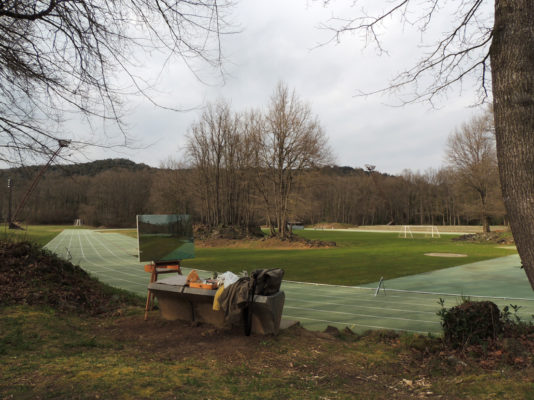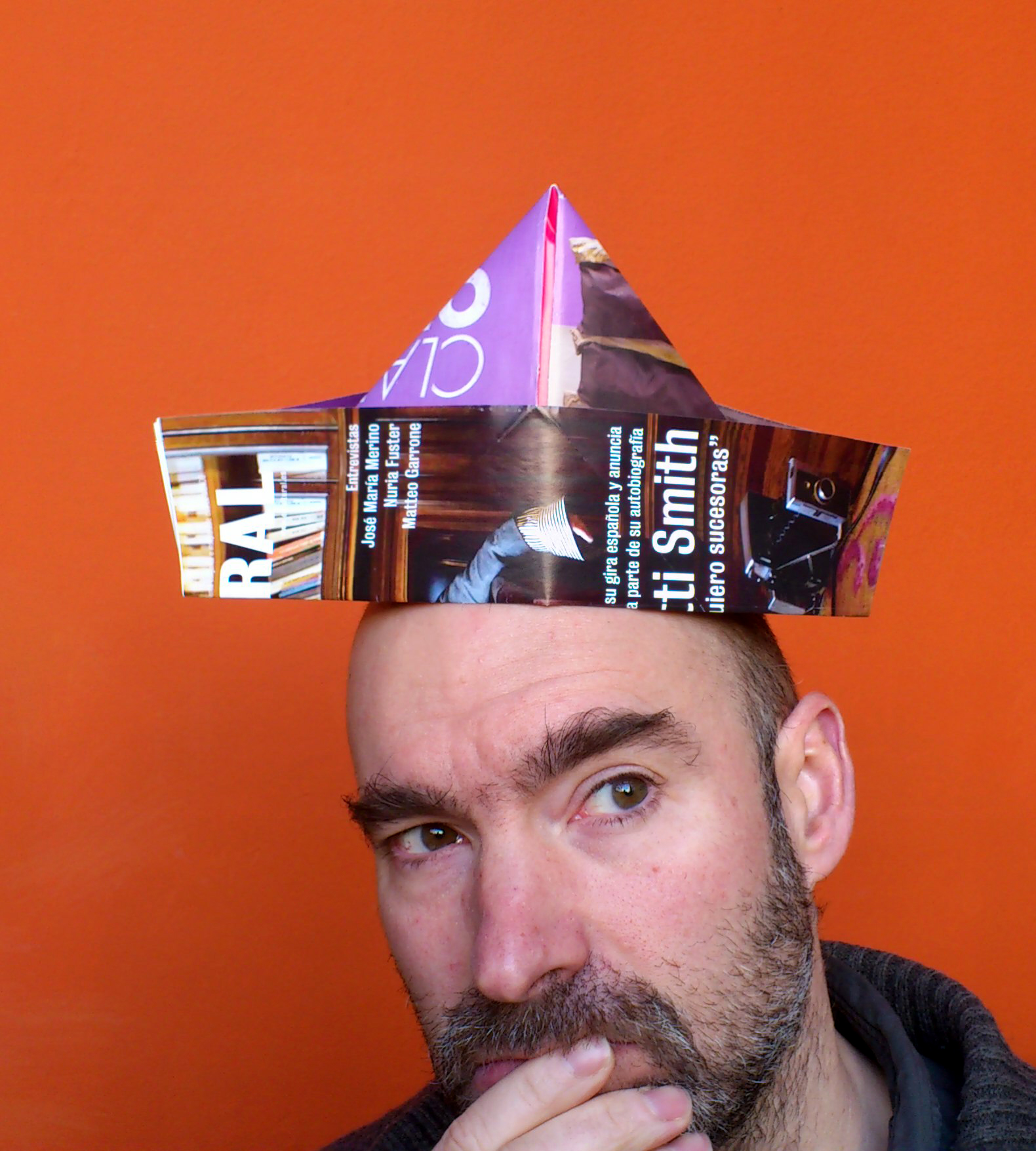Search
To search for an exact match, type the word or phrase you want in quotation marks.
A*DESK has been offering since 2002 contents about criticism and contemporary art. A*DESK has become consolidated thanks to all those who have believed in the project, all those who have followed us, debating, participating and collaborating. Many people have collaborated with A*DESK, and continue to do so. Their efforts, knowledge and belief in the project are what make it grow internationally. At A*DESK we have also generated work for over one hundred professionals in culture, from small collaborations with reviews and classes, to more prolonged and intense collaborations.
At A*DESK we believe in the need for free and universal access to culture and knowledge. We want to carry on being independent, remaining open to more ideas and opinions. If you believe in A*DESK, we need your backing to be able to continue. You can now participate in the project by supporting it. You can choose how much you want to contribute to the project.
You can decide how much you want to bring to the project.

Rafaelito, as his cousins from Gran Canaria called him, was seven years old when he got in the boat that crossed the Strait from the islands and went the Mediterranean coast up to Barcelona. It was the year 1942 and the world -or a big part of it- was at war. Those planes that had helped destroy the Republic were now bombing the Rock. A new conflict, the same old strategies, more death and destruction. As if it was a box seat, the passengers of the Ciudad de Sevilla boat, became spectators. For four long hours. Once the attack was over, they carried on with their journey to the Catalan capital city. The Griera’s stayed there for a night, a day, and yet another night. Next morning, they caught a train that brought them to Girona, and from there, a second one, to Olot, the one Alexandre Cuéllar, defines on a brief biography about the painter Rafael Griera as the train that took off when it pleased and arrived when it could. During that fourth day of travel, in the night of the feast of Sant Jaume, the neighbourhood where they lived was decorated and celebrating. Rafaelito would never forget it. They left the insular redness behind the Teide to go to the only volcanic location in the peninsula.
Born on the 28th of October, 1934, in Las Palmas city, to an Extremaduran mum, Celina herself the daughter of a prison officer sent from the Government of Madrid to run the jail of El Hierro; and son of an Olot man who ran away from war to start a branch of the transport company El Rayo (El rayo soy donde me llaman voy, or I am the thunder, where they call me is where I go, as the publicity said) in the islands.

Rafaelito lived his first years with is mum Celina in the prison his granddad Orencio ran. They three and a single prisoner which Papa Orencio used to play chess with, as if it was a García Márquez’ novel. Or at least that’s how the painter used to talk about it. Until Joan, his dad, decided to come back and resume the activity in the religious imagery factory he inherited, at his basement in the Fontanella street, in Olot.
Rafael was a bad student, but a happy one, and when he was old enough, he became an apprentice in the polychromy section of the repair shop. He liked to paint, and he was good at it. He practiced plein air painting with his friends on Saturdays. They usually met with Joan de Cabirol i Sendrós. A much older man who had arrived from Barcelona at his family’s request. According to Rafael, it seems like the eccentricities of the eldest son had put in risk the good reputation of a prototypical burgess family from Barcelona with a box at the Liceu. Fearing a scandal, they exiled him to the capital of La Garrotxa.
The newcomer integrated easily, though. Without his family censoring him and with a generous income, he was able to develop all his creative potential, initially as a painter, then as a singer, and when it was necessary, as the producer of the music-hall in the Main Theatre. Leche y Chocolate became an unforgettable party for all the lucky attendees. A comical musical high-voltage show, especially during the performance of Las Bombon Café, a couple of exuberant Cuban girls dressed for the occasion who overexcited everyone with their spicy repertoire.
Paradoxically, there isn’t much written information about Joan de Cabirol i Sendrós. The largest reference about him is the one Josep Maria Canals makes in his Diccionari Biogràfic, with a file headed by the tag Artist: drawer and painter, singer and philanthropist. If we ask the Arxiu Comarcal, the local archive, the only information about him makes reference to Institut Montsacopa and the avenue named after him. On the year 1967, a year before he died in a traffic accident, he gave the city that had took him in some properties where the new institute of the town afterwards was built, at the foot of the wineglass-shaped mountain, the youngest volcano of the place. As a tribute to the benefactor, the council gave the street that leads to it his name.
Rafael Griera shared journeys of plein air painting, intellectual social gatherings in the meetings of the group “Crater d’art” self-proclaimed “Cercle d’artistes en eterna discussió” (Circle of artists in perpetual discussion), and nocturnal fun, lots of nocturnal fun with Cabirol. Years later, after Cabirol’s death, there were few relaxed talks by Rafael Griera in which he didn’t remember the amateur eccentric painter and his obsessive need to reproduce the marshes of La Moixina with mathematical accuracy. Those marshes are an emblematic spot for painters from the Escola de Paisatgisme d’Olot (Olot school of landscape painting), both immortalised and idealised in the painting L’estiu by Joaquim Vayreda. What fascinated Griera wasn’t his slowness as much as his perseverance to reproduce each detail of such a nature in constant change. A combination that made it impossible for him to consider his paintings finished.
Rafael built a marvellous character I wanted to appropriate for myself. In a certain way, that appropriation, became a multiple tribute, to the character and to his creator, but to the land, to painting itself and to the landscape as well -as my mum would say “No és bord qui retira als seus*”- (“It’s not a bastard to withdraw one’s own”), from an ironic perspective, but avoiding every nostalgic drift.
At the beginning of April of 2013 I placed Rafael’s clapped-out portable easel on a small elevation that acts as a stair, just over the final curve of the athletics track the RCR architecture office designed and built in a little clearing of an oak wood, between the Fluvià river and the old route of the Carrilet, the train that went out when it pleased and arrived when it could. The Athletics Stadium Tossols-Basil was the chosen spot to activate a practical performative that would consist in painting, in a reiterated way, the same landscape on the same support. An absurd action from a both productive and functional perspective, not as much for the tools used: oil painting on cotton fabric, as for the goal: to reproduce the changing nature of a place, that, in my opinion, represents the paradigm of the landscape of the XXI century.
When I considered the project, the calendar was quite clear, following a “Vivaldian” guideline, I would set a plein air session up for each season. Not only did the image of painting at the tracks while it snowed seduced me, that romantic, dangerously cheesy photography of living manger, would accentuate the absurd nature of the action. The aversion to cold and the laziness to leave the blanket, however, established an unappealable reality. I’m a short-sleeved summer plein air painter. With a brush on one hand and a soda on the other one. At the end of the day, nothing different from what Joan de Cabirol, or the version of him Rafael Griera liked to talk about, would do.

Rafel G. Bianchi is the artistic name of Rafel Griera, born in Olot on 29 May 1967. I like the freedom allowed to the multidisciplinary artist, but as a friend says, in my case, all this is an excuse to paint.
"A desk is a dangerous place from which to watch the world" (John Le Carré)